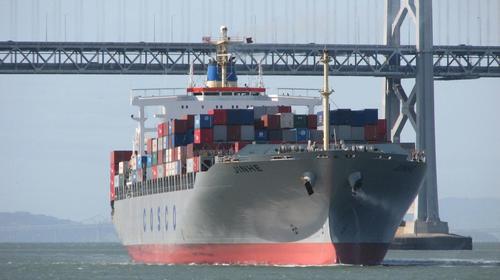Stage Is Set For “Dramatically Higher Inflation” As Transportation Costs Spike Even Higher
By Greg Miller of Freight Waves,
The headlines last August and September blared: “Trans-Pacific rates are going crazy.” “Rates are on fire.” “Records shattered.” Oh, what cargo shippers would give to get the rates they paid eight or nine months ago. Those earlier records were repeatedly shattered. It just happened yet again.
“Non-stop demand of ocean freight and the resulting delays and equipment shortages pushed spot rates to new heights across all major trade lanes once again this week,” said Judah Levin, the research lead at Freightos.
And spot rates don’t tell the whole story. Shippers are paying thousands more in premiums on top of those rates just to get their cargo loaded.
Fixed annual contracts priced 50%-100% higher than last year’s will partially shield importers from the latest spot-rate rise. But with many shippers still heavily exposed to the spot market as the traditional peak season nears, the stage is set for the dramatically higher transport costs to be passed along to consumers, to the extent possible, in the form of inflation.
Trans-Pacific rates still rising
As of Wednesday, the Freightos Baltic Daily Index assessed Asia-West Coast spot rates (SONAR: FBXD.CNAW) at $5,650 per forty-foot equivalent unit (FEU). That’s up 15% from the beginning of this month and up 70% from rates back in August and September when pricing began to garner headlines. Rates are now 3.2 times higher than in mid-May 2020, up 228% year-on-year (y/y).
On the longer route from Asia to the East Coast via the Panama Canal, Freightos assessed Wednesday’s spot rate at $7,435 per FEU, up 171% y/y. The all-time high was hit Tuesday: $7,555 per FEU.
Add on extra charges and it looks like paying around $10,000 per FEU is the new normal for Asia-East Coast cargoes.
Different indices use different methodologies and come up with different rates, but the trend lines all go in the same direction: up.
Drewry’s weekly World Container Index, published Thursday, assessed Shanghai-Los Angeles rates at $5,255 per FEU, up 201% y/y, and Shanghai-New York rates at $7,085 per FEU, up 154% y/y.
Trans-Atlantic: Sleepy no more
The westbound trans-Atlantic route was one trade lane that had seemed to escape massive rate inflation. That ended in April, shortly after the Ever Given accident in the Suez Canal. It is no longer the sleepy trade it once was.
Last month’s surge was just the beginning. Rates have kept climbing. As of Wednesday, Freightos put the Europe-East Coast spot rate at a record-high $4,299 per FEU, up 132% y/y.
Drewry’s assessment is considerably lower than Freightos’, at $3,550 per FEU, up 37% y/y.
Asia-Europe: Most extreme increases
Many larger U.S. shippers have global operations and send significant volumes from Asia to Europe. However extreme the rate rises to the U.S., they pale in comparison to what’s going on in Europe. Rates there have climbed significantly from already very high levels since the Ever Given accident, which heavily impacted these cargo flows.
According to Frieghtos, Asia-North Europe rates on Wednesday were $8,331 per FEU, up 493% y/y or 5.9 times rates in mid-May 2020. Of all the mainline trades, rates in Asia-North Europe have risen the most.
Asia-Mediterrean rates were $9,387 per FEU, 4.8 times higher than this time last year, a 377% y/y increase.
Drewry estimates current Shanghai-Rotterdam spot rates at $8,976 per FEU, up 539% y/y, and Shanghai-Genoa rates at $8,943 per FEU, up 471% y/y.
In general, freight cost increases are not only more painful in Europe than in the U.S. because they’ve risen faster, but because Europe — unlike the U.S. — is in the midst of a recession.
Tyler Durden
Fri, 05/14/2021 – 13:20
via ZeroHedge News https://ift.tt/2RcMqhA Tyler Durden





